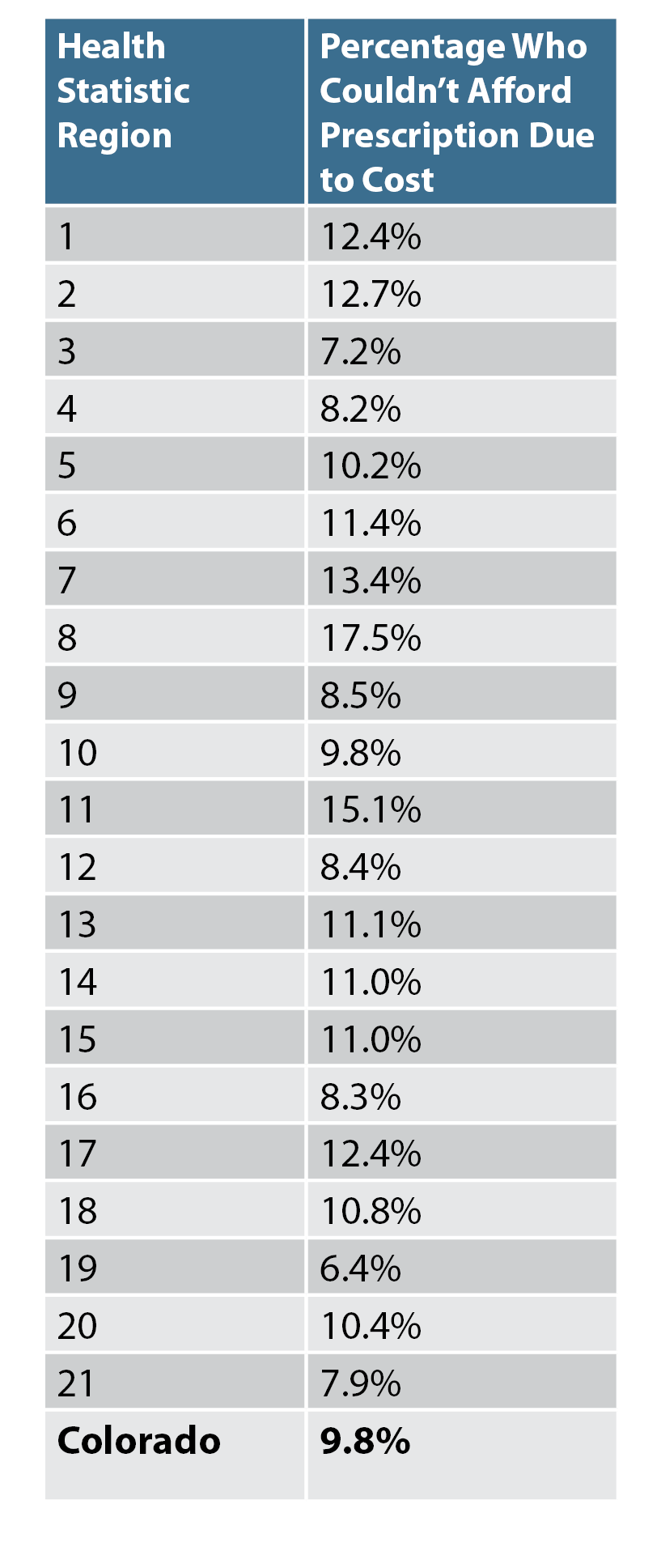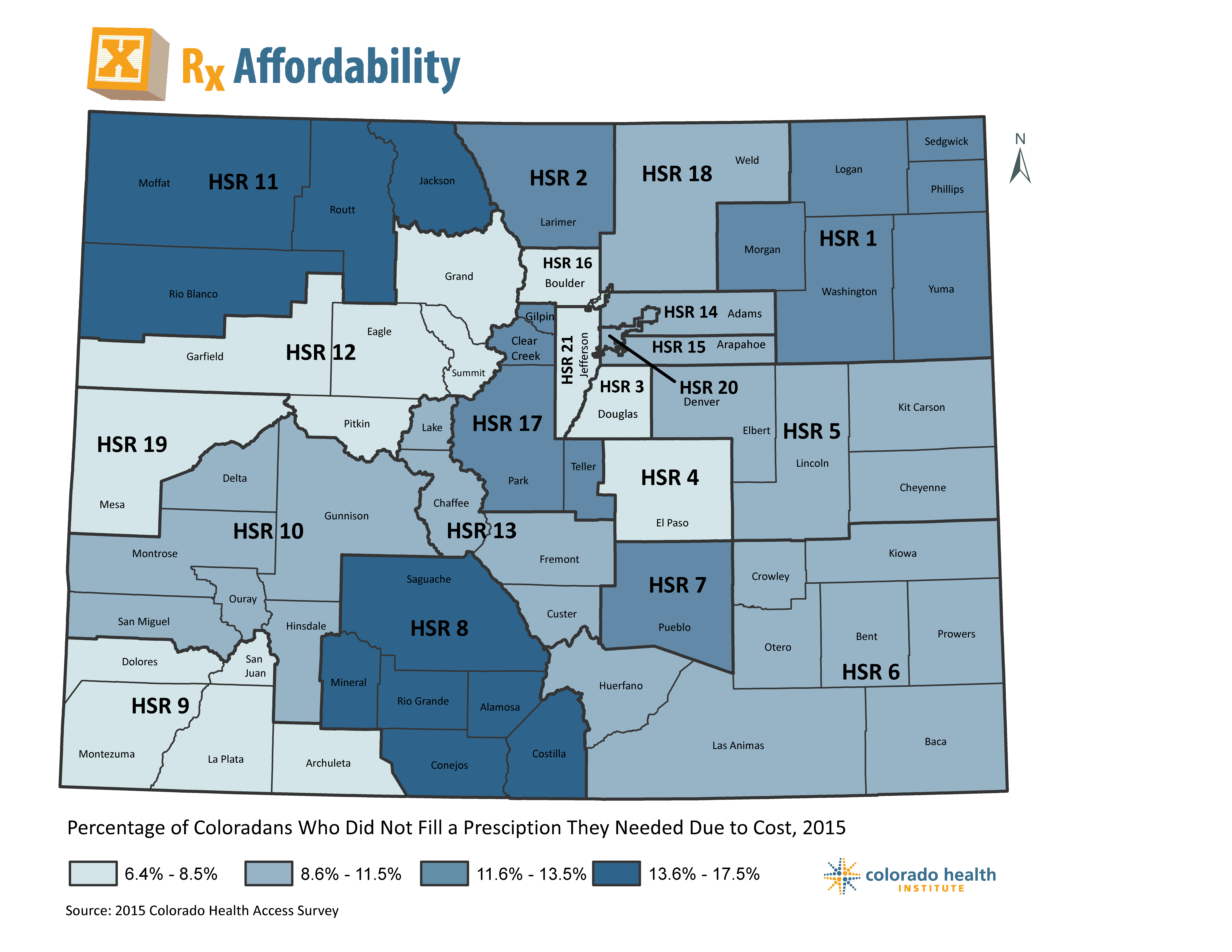That will be $300, the pharmacist said to me. I was shocked. I had been using this exact same inhaler for my asthma for years and I had always paid only a nominal copayment .
.
This time, I had to tell the pharmacist thanks but no thanks. I walked away without my inhaler.
The percentage of Coloradans who could not afford a prescription is at a six-year low, according to an analysis of Colorado Health Access Survey (CHAS) data.
Still, about 500,000 Coloradans, or 9.8 percent of the population, did not fill a prescription because it cost too much in 2015. And most of these are people with coverage. How can that be?
Many people gained health insurance through the provisions of the Affordable Care Act (ACA). But that does not mean they gained adequate health insurance. About 27 percent of the people who could not afford a prescription drug in 2015 were underinsured, meaning that even though they have health insurance it has high deductibles and their out-of-pocket expenditures were high.
I was fortunate that I knew to call my doctor and inquire about less expensive options. I now pay $40 for a similar inhaler.
But not every medication has a generic or less expensive alternative. And not filling a prescription can cause a decline in health. Ultimately, the cost of not filling a prescription may be higher than the expensive medication if not taking it results in hospitalizations and emergency room visits.
Although 9.8 percent of Coloradans can’t fill a prescription due to cost, pockets of rural Colorado have much higher percentages of residents who can’t afford a prescription.
The highest rates of those who didn’t fill a prescription because it cost too much are in the San Luis Valley (17.5 percent) and northwest Colorado (15.1 percent.)
Coloradans living along the Interstate 25 corridor, in the mountain regions and in southwestern Colorado tend to be the least likely to report forgoing a prescription due to cost. Many factors could be contributing to these better-than-average rates. Those along the I-25 corridor tend to have higher average incomes. Residents of these communities also report better health status, making them less likely to need prescription medicines.
Despite the increase in health insurance coverage driven by the ACA, the price of prescription drugs continues to be a hot topic. State policy makers have introduced legislation aimed at understanding and lowering the cost of prescription drugs. But pharmaceutical companies ultimately defeated the bill saying that it unfairly targets them to report proprietary information.
The Colorado Health Institute will continue to follow new ideas and strategies to improve access to prescription drugs.
To learn more check out our report, Sticker Shock: More Coloradans Can Afford Prescriptions, but Problems Remain.

